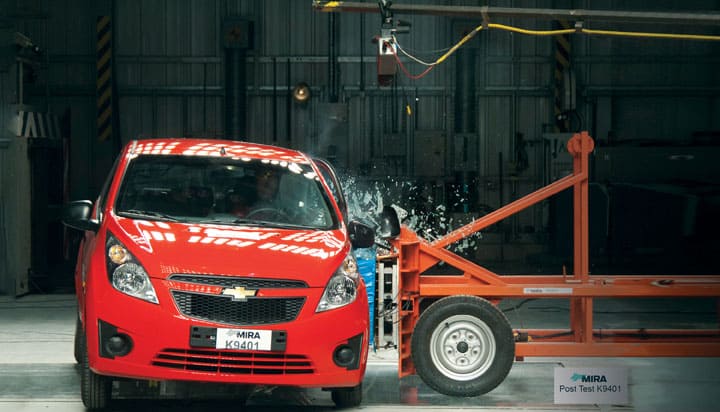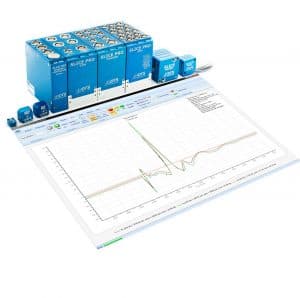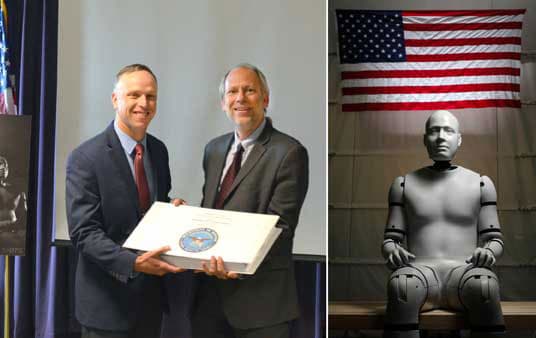
WIAMan Blast Dummy Joins U.S. Army
WIAMan Blast Dummy Joins U.S. Army
Steve Pruitt (right), president and CEO of Diversified Technical Systems, Inc., presents Fred Hughes (left), director of the U.S. Army Research Laboratory’s Warrior Injury Assessment Manikin Engineering Office, with a verified copy of the WIAMan technical data package at a ceremony held at Aberdeen Proving Ground, Maryland, May 31. (U.S. Army photo)
Army program completes, delivers technical data package for newest test manikin
ABERDEEN PROVING GROUND, Md. (June 2018) – The U.S. Army Research, Development and Engineering Command, Army Research Laboratory’s Warrior Injury Assessment Manikin, or WIAMan, Engineering Office delivered the WIAMan Generation 1 manikin technical data package to representatives of the U.S. Army Program Executive Office Simulation, Training and Instrumentation located in Orlando, Florida,during a ceremony held at APG May 31.The WIAMan Gen 1 is the world’s first test manikin that is purpose-built for military use in underbody blast testing of ground vehicles in live-fire test and evaluation.In accordance with the Army-approved schedule for transition of the WIAMan program from ARL to the Assistant Secretary of the Army (Acquisition, Logistics and Technology), the on-time delivery of the package, which includes drawings, specifications and manuals for the test manikin, marks the start of the formal handover of management of the WIAMan program from the science and technology community to the material developer.
For information, contact Joyce M. Conant, U.S. Army Research Laboratory Public Affairs Officejoyce.m.conant2.civ@mail.milOffice (410) 278-8603 Mobile (443) 221-9801Aberdeen Proving Ground, MD 21005“Accelerating innovative technologies from government, industry and academia to the warfighter is paramount to maintaining overmatch for the Army in future conflicts,” said Fred Hughes, director of the WIAMan Engineering Office.“Success for ARL is defined by the timely and expedited transition of intellectual property from the S&T community to the material developer to push new capabilities into the field sooner.”WIAMan is a tremendous example of the synergy generated by outcome-based research with deliverable products and similar to the current Army cross functional teams, he said.“The WIAMan team integrated representatives of the S&T, program management and testing communities, along with industry and academic partners to collaboratively develop and transition a game-changing technology to improve injury assessment capabilities to ASA(ALT),” Hughes said.“ARL is bridging the ‘Valley of Death’ and rapidly transitioning technology to the testing and analysis community to ensure future combat vehicles are more survivable for our warfighters.”Diversified Technical Systems, Inc., the program’s prime contractor, delivered the TDP to the Army’s WIAMan Engineering Office April 30.The team initiated an aggressive four-week effort to verify the package, working with representatives from the U.S. Army Test and Evaluation Command and the U.S. Army Tank Automotive Research, Development and Engineering Center to ensure it was correct and ready for transition to PEO STRI.
“The cooperation between government and industry has been a model of how a complex development program can be completed on an expedited schedule, within budget,” said Steve Pruitt, DTS President and CEO. “Starting from a concept technical data package in early 2015 to delivery of four WIAMan Gen 1 manikins in less than three years is a remarkable achievement.”Pruitt said WIAMan will significantly increase the Army’s capability to assess probably of injury to warfighters in a wide range of underbody blast events—saving lives and reducing injuries by helping the Army and industry to design vehicles that best protect them. According to Hughes, the WIAMan package is a key delivery to the material developer for the continued development and production of WIAMan manikins to support the upcoming armored multi-purpose vehicle under-body blast testing in fiscal 2020.“Maintaining our technological advantage in warfare is found in dogged scientific advancements and decisive programs that are steadfast in its pursuit,” said Col.Scott McIntosh, PEO STRI Joint Project Manager Medical Modeling and Simulation.“None are more crucial than those that underpin the survivability of our warfighters.”He said the collaborative work between the WIAMan Engineering Office and JPM MMS embodies this determination to save lives.
“Our two offices’ shared commitment to the program’s purpose combined with an innovative strategy with our industry partners has provided the DOD a cutting-edge test capability that is irreplaceable,”McIntosh said.“Our work illustrates that when the entire process is agreeably focused on the problem set, challenges can be quickly surmounted. Our work will be used for decades to support force wide modernization efforts and evaluate threats to our service members.”The formal transition of the management of the manikin from ARL to PEO STRI culminated in a technology readiness level 6 live-fire test demonstration held at APGJune 13.Army S&T laboratories will continue to execute additional critical elements of the effort, to include ongoing biomechanical research and development of a virtual WIAMan finite element model.
For more information on DTS data acquisition systems, data loggers or sensors, visit www.dtsweb.com




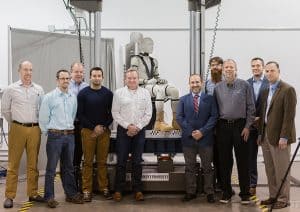 Seal Beach, CA (February 2017) – Nearly 100 DTS employees and several key U.S. Army personnel gathered for the official ribbon-cutting ceremony at the new WIAMan ATD Lab located inside DTS headquarters in Seal Beach, California. The new lab is being used exclusively to support the design, development and testing of the first blast test dummy, officially called the Warrior Injury Assessment Manikin (WIAMan). DTS is the Prime Contractor to the U.S. Army for the WIAMan project, which is the first anthropomorphic test device (ATD) designed specifically to withstand underbody blasts (like IEDs). The goal of all WIAMAN testing is to advance soldier protection and improve military vehicle designs.
The new 3,000+ sq. ft. lab is furnished with state-of-the-art test equipment including an 11-foot drop tower used to simulate the vertical impact experienced by an occupant in a vehicle blast. A 5-point harness secures WIAMan in the drop tower seat while a 200g pulse simulates blast forces. Load cells in the seat measure five different load paths through the pelvis and femur to quantify potential spine and lower extremity injuries. A linear impactor performs iterative testing on lower leg and pelvis components, accelerating a 20kg impact mass to a velocity of 20 meters/sec. Analyzing gross motor movement in slow motion helps engineers better understand the forces soldiers experience in the field, so multiple high speed cameras capture the action at over 100,000 frames/second.
“The program provides a state-of-art test capability to assess potential skeletal injuries of Soldiers exposed to under-body blast,” said Fred Hughes, director of the WIAMan Engineering Office. “The manikin’s sophisticated biofidelity and robust sensor design provides an unmatched level of accuracy determining the potential effects of blast on Soldiers in new vehicle systems. The WIAMan effort is an example of outstanding collaboration among academia, industry, and the government.”
The WIAMan project is especially important because no human surrogate for blast testing exists today. Automotive crash test dummies have been used in the past, but they are built to withstand frontal and side impacts, not the vertical acceleration of an under-body blast. The multi-year project includes not only building the new ATD, but also a next generation in-dummy sensing and data acquisition solution that goes inside the dummy.
To measure potential skeletal injuries, WIAMan currently uses 146 channels of embedded data acquisition and sensors, but is designed to support up to 180 channels. The self-contained miniature data acquisition systems are distributed throughout the test manikin and include internal power and a variety of sensors. The data collected includes six degree of freedom of forces, moments, accelerations and angular velocities from sensors located along the pelvis, spine, tibia and foot/heal. The data WIAMan will measure has far reaching, life-saving implications not only in the development of safer military vehicles and tactical gear, but to families around the world.
For additional information and more WIAMan images visit
Seal Beach, CA (February 2017) – Nearly 100 DTS employees and several key U.S. Army personnel gathered for the official ribbon-cutting ceremony at the new WIAMan ATD Lab located inside DTS headquarters in Seal Beach, California. The new lab is being used exclusively to support the design, development and testing of the first blast test dummy, officially called the Warrior Injury Assessment Manikin (WIAMan). DTS is the Prime Contractor to the U.S. Army for the WIAMan project, which is the first anthropomorphic test device (ATD) designed specifically to withstand underbody blasts (like IEDs). The goal of all WIAMAN testing is to advance soldier protection and improve military vehicle designs.
The new 3,000+ sq. ft. lab is furnished with state-of-the-art test equipment including an 11-foot drop tower used to simulate the vertical impact experienced by an occupant in a vehicle blast. A 5-point harness secures WIAMan in the drop tower seat while a 200g pulse simulates blast forces. Load cells in the seat measure five different load paths through the pelvis and femur to quantify potential spine and lower extremity injuries. A linear impactor performs iterative testing on lower leg and pelvis components, accelerating a 20kg impact mass to a velocity of 20 meters/sec. Analyzing gross motor movement in slow motion helps engineers better understand the forces soldiers experience in the field, so multiple high speed cameras capture the action at over 100,000 frames/second.
“The program provides a state-of-art test capability to assess potential skeletal injuries of Soldiers exposed to under-body blast,” said Fred Hughes, director of the WIAMan Engineering Office. “The manikin’s sophisticated biofidelity and robust sensor design provides an unmatched level of accuracy determining the potential effects of blast on Soldiers in new vehicle systems. The WIAMan effort is an example of outstanding collaboration among academia, industry, and the government.”
The WIAMan project is especially important because no human surrogate for blast testing exists today. Automotive crash test dummies have been used in the past, but they are built to withstand frontal and side impacts, not the vertical acceleration of an under-body blast. The multi-year project includes not only building the new ATD, but also a next generation in-dummy sensing and data acquisition solution that goes inside the dummy.
To measure potential skeletal injuries, WIAMan currently uses 146 channels of embedded data acquisition and sensors, but is designed to support up to 180 channels. The self-contained miniature data acquisition systems are distributed throughout the test manikin and include internal power and a variety of sensors. The data collected includes six degree of freedom of forces, moments, accelerations and angular velocities from sensors located along the pelvis, spine, tibia and foot/heal. The data WIAMan will measure has far reaching, life-saving implications not only in the development of safer military vehicles and tactical gear, but to families around the world.
For additional information and more WIAMan images visit 
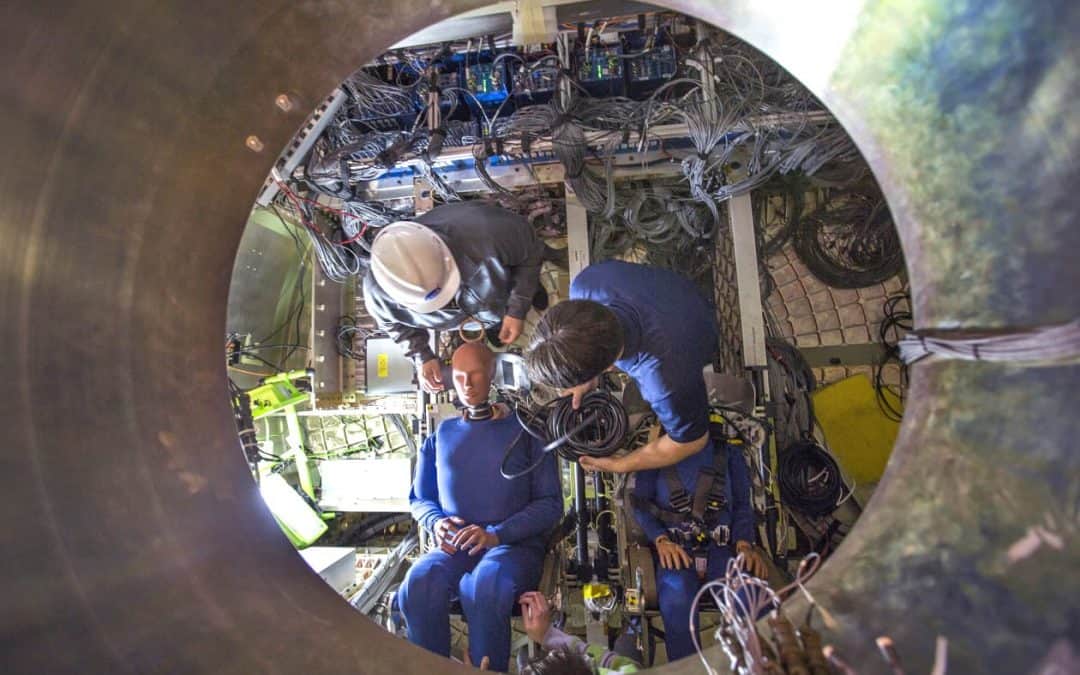


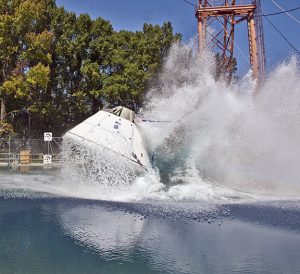 Seal Beach, CA (Sept. 2016) – Engineers at NASA’s Langley Research Center in Hampton, Virginia, will conduct nine water-impact drop tests to evaluate the Orion spacecraft and crew safety when they return from deep-space missions and touch down on Earth’s surface. Onboard will be two test dummies wired up to Diversified Technical System (DTS) data acquisition systems that will ride along to collect critical test data as NASA prepares Orion for its next mission, Exploration Mission-1. During Exploration Mission-1, the uncrewed Orion spacecraft will launch atop the Space Launch System (SLS) rocket, travel more than 40,000 miles beyond the moon and return at speeds up to 25,000 mph.
Seal Beach, CA (Sept. 2016) – Engineers at NASA’s Langley Research Center in Hampton, Virginia, will conduct nine water-impact drop tests to evaluate the Orion spacecraft and crew safety when they return from deep-space missions and touch down on Earth’s surface. Onboard will be two test dummies wired up to Diversified Technical System (DTS) data acquisition systems that will ride along to collect critical test data as NASA prepares Orion for its next mission, Exploration Mission-1. During Exploration Mission-1, the uncrewed Orion spacecraft will launch atop the Space Launch System (SLS) rocket, travel more than 40,000 miles beyond the moon and return at speeds up to 25,000 mph.